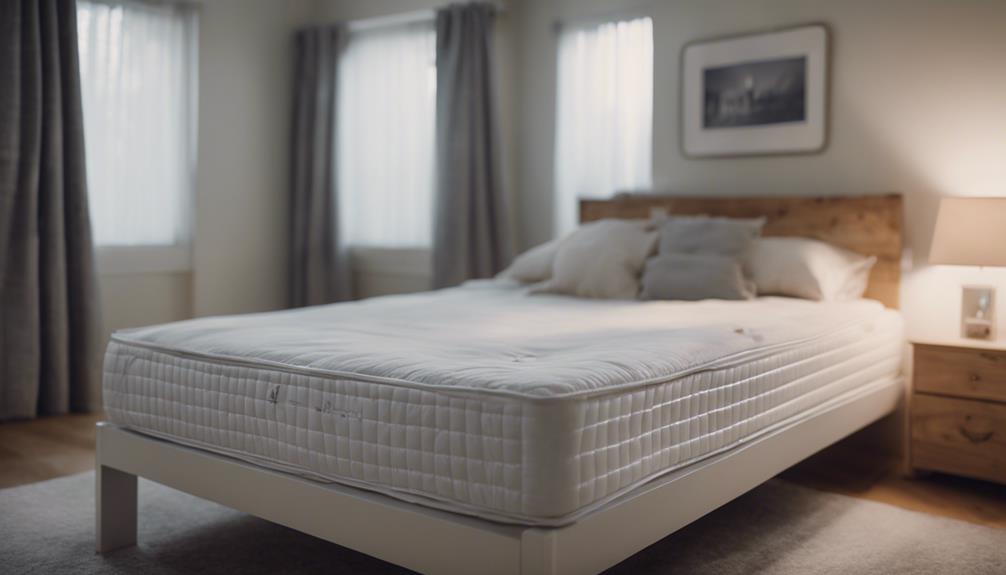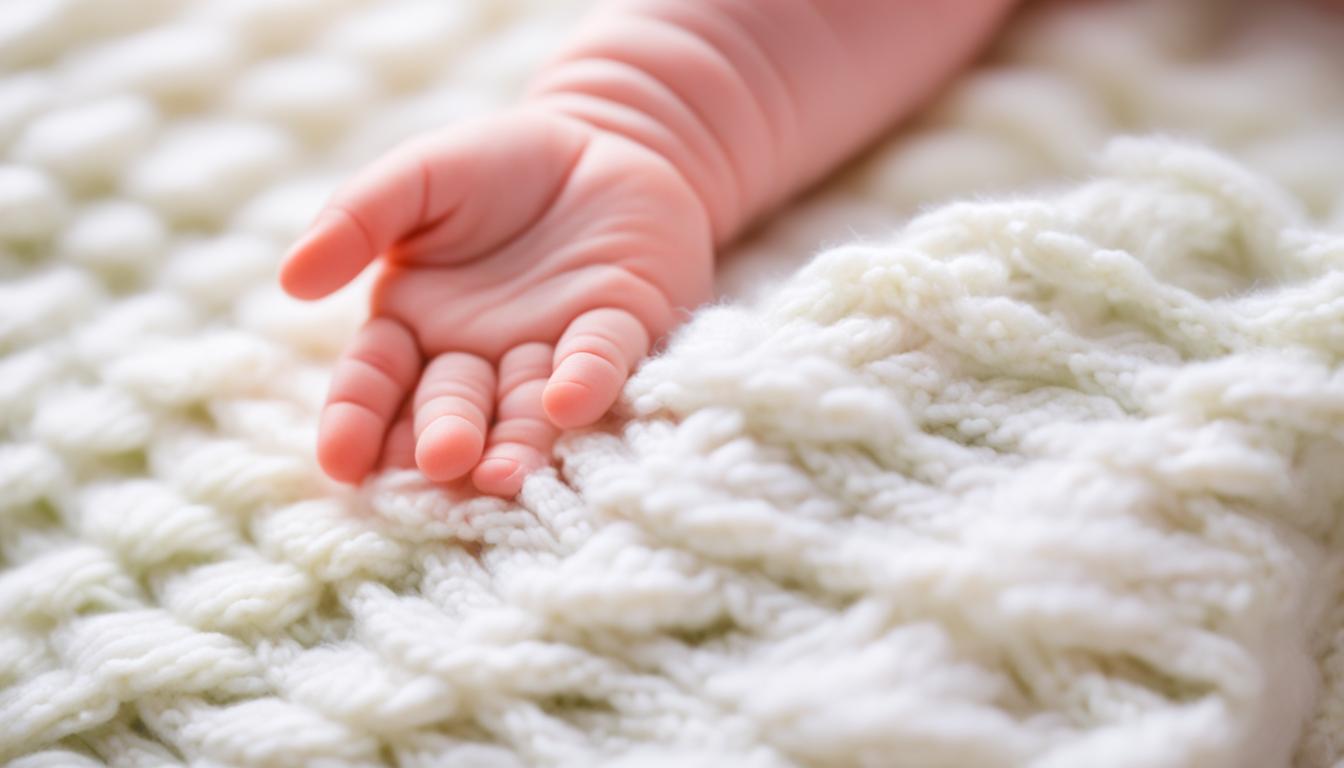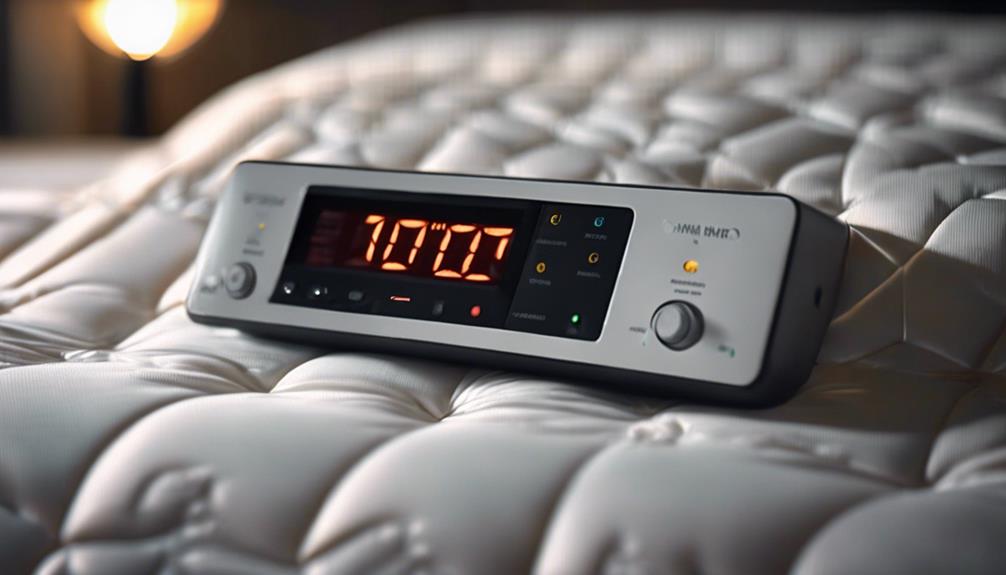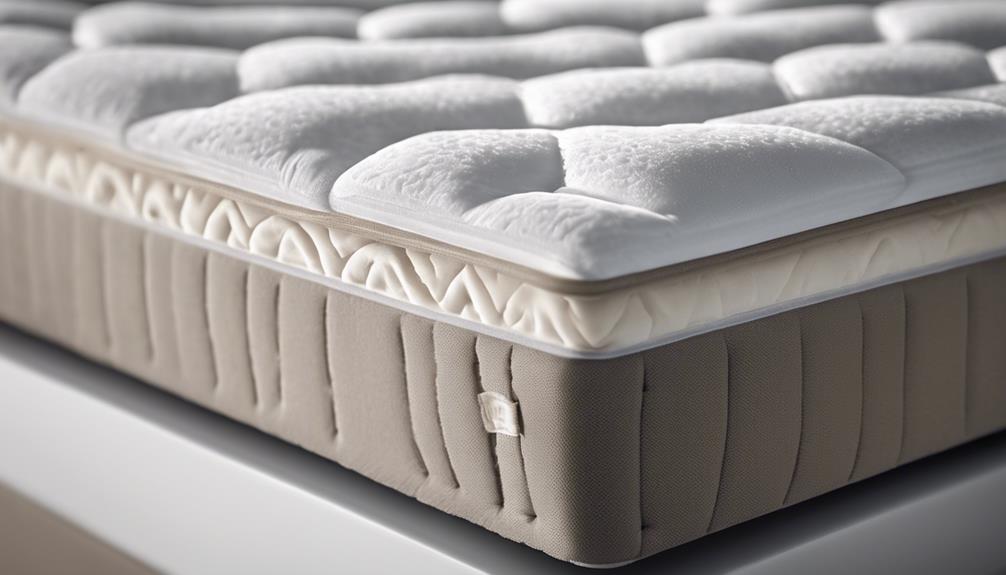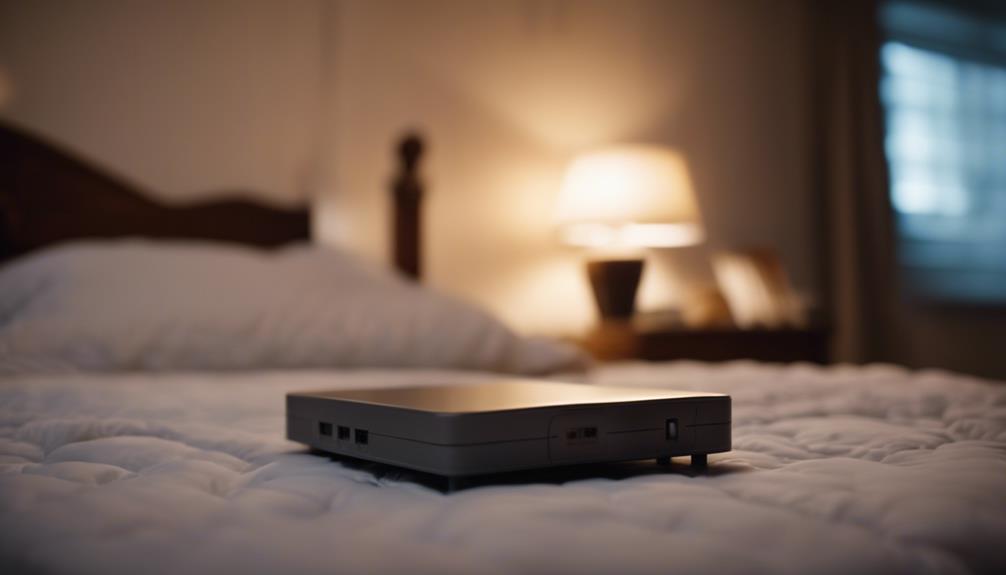We suggest cleaning your mattress pad every other month to keep it fresh and prevent the buildup of body oils, sweat, and dust. If you have allergies or pets, you may need to wash it more frequently. It is crucial to immediately deal with spills and stains to prevent odors and prolong the life of the pad. By following the care label instructions, such as using a gentle cycle, you can protect the delicate fibers and extend the pad’s longevity. Regular washing not only maintains cleanliness but also promotes a healthier sleep environment. Taking care of your mattress pad is essential for a good night’s sleep and overall well-being.
Key Takeaways
- Recommended washing every other month for freshness and hygiene.
- More frequent washing for allergies, spills, stains, or pet shedding.
- Immediate action on spills to prevent odors and extend pad lifespan.
- Regular washing prevents bacteria, allergens, and odor buildup.
- Follow care label instructions to avoid damage and ensure longevity.
Frequency of Washing Mattress Pad
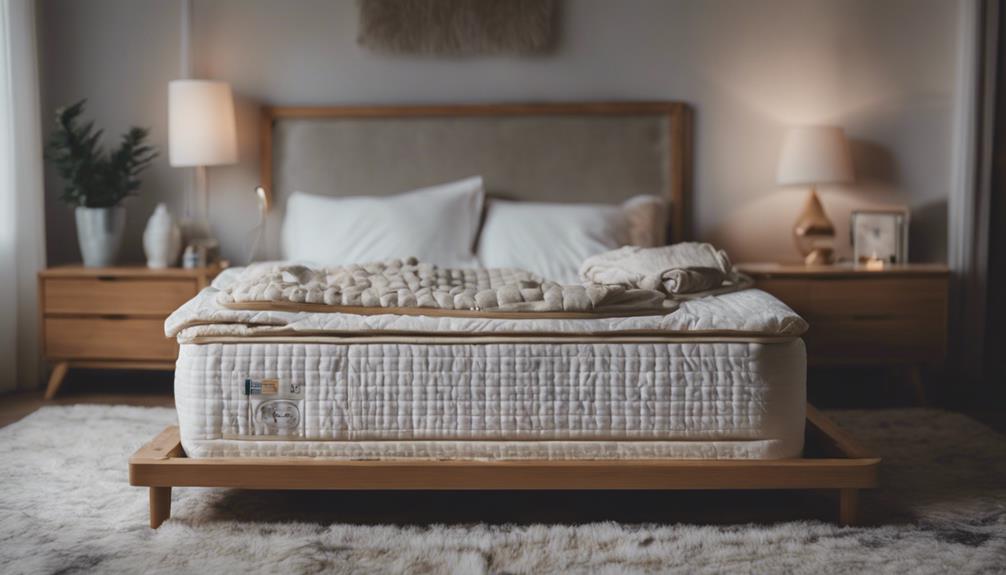
How important is it to wash our mattress pad regularly to guarantee cleanliness and freshness?
Washing your mattress pad every other month is recommended to maintain its freshness and cleanliness. However, certain circumstances may require more frequent washing, such as if you're a heavy sweater, suffer from allergies, or experience spills on the mattress pad. It's also recommended to wash the pad before first use to eliminate any residual chemicals from manufacturing processes. Regular washing not only keeps the pad clean but also helps prevent issues like odor buildup and the presence of dust mites.
To ensure the longevity of your mattress pad, it's vital to follow the care instructions provided on the label. These instructions are designed to help you properly maintain the pad and maximize its lifespan. By following the care guidelines, you can keep your mattress pad clean, fresh, and in excellent condition for a longer period.
Allergies and Symptoms

Allergy sufferers should prioritize washing their mattress pad more frequently to minimize exposure to allergens. Symptoms like sneezing, itching, or congestion can worsen if dust mites and bacteria accumulate on the mattress pad. By adhering to a regular washing schedule, allergy sufferers can reduce these allergens, alleviate symptoms, and improve their overall sleep quality.
Dust mites thrive in warm, humid environments, making the mattress pad an ideal breeding ground if not cleaned regularly. Bacteria can also trigger allergic reactions and impact respiratory health. Maintaining a clean mattress pad is essential for creating a healthier sleep environment and managing allergies effectively.
Those experiencing allergy symptoms should consider washing their mattress pad more often to promote a restful and symptom-free sleep. Giving priority to cleanliness can lead to a significant reduction in allergy triggers and contribute to a more comfortable and restorative sleep experience for allergy sufferers.
Spills and Stains

When spills or stains happen on your mattress pad, prompt action is essential to prevent lasting damage. Quickly addressing liquid accidents and stubborn stains can help maintain the freshness and cleanliness of your mattress pad.
Utilizing a stain remover or gentle detergent can effectively tackle spills and keep your mattress pad in top condition.
Handling Liquid Accidents
To effectively address spills and stains on your mattress pad, promptly blot up any liquid to prevent absorption into the fabric. Here are some tips to help you handle liquid accidents effectively:
- Act Quickly: The sooner you address the spill, the easier it will be to remove the stain and prevent odors.
- Use Mild Detergent: Mix mild detergent with water to spot-clean the affected area gently.
- Avoid Harsh Chemicals: Steer clear of harsh chemicals or bleach that could damage the fabric or vinyl backing.
- Air Dry Thoroughly: Allow the mattress pad to dry completely before reusing it to prevent mold and mildew growth.
Removing Stubborn Stains
Promptly addressing spills and stains on your mattress pad is important to prevent them from setting in and becoming stubborn to remove.
When dealing with stubborn stains, consider using a gentle stain remover or a mixture of water and vinegar for effective results. Remember to blot the stain instead of rubbing it, as rubbing can spread the stain and damage the fabric.
Prior to applying any cleaning solution, test it on a small, inconspicuous area of the mattress pad to make sure it's safe to use. For tough stains, it's vital to follow the manufacturer's care instructions to avoid damaging the mattress pad further.
Care Label Instructions
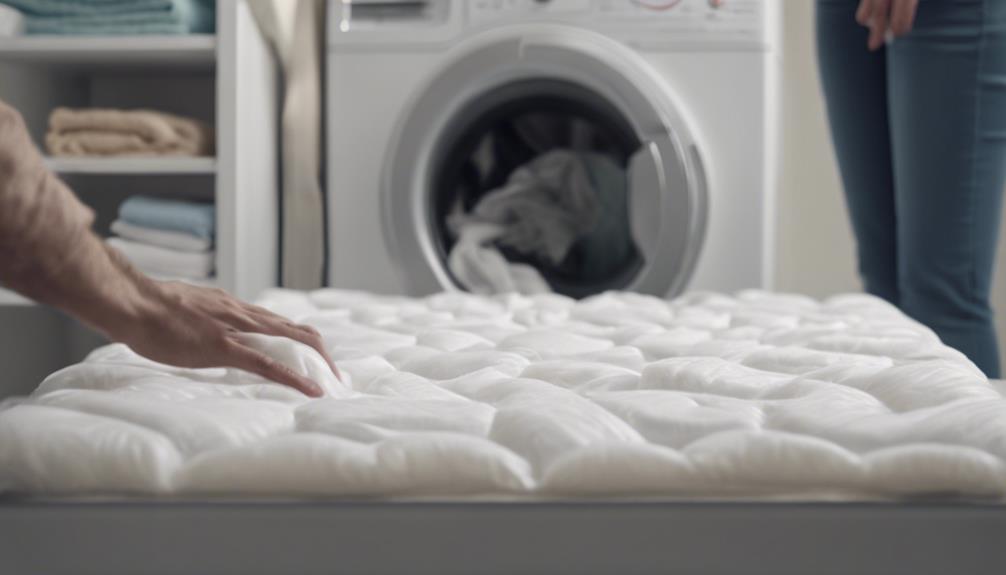
Following the care label instructions on mattress pads is crucial for guaranteeing proper cleaning and maintenance. When it comes to caring for your mattress pad, the care label provides valuable guidance tailored to the specific needs of the material. Here are some key points to keep in mind:
- Washing Frequency: The care label typically indicates how often the mattress pad should be washed. This can vary depending on the material and usage, so it's important to adhere to these guidelines to keep your mattress pad fresh and clean.
- Specific Instructions: Care labels may recommend machine washing in cold water and air drying for best results. By following these specific instructions, you can prevent potential damage and maintain the quality of your mattress pad.
- Gentle Cycle: Some mattress pads require gentle cycle washing to avoid potential shrinkage or wear and tear. This setting helps to protect the delicate fibers and ensure longevity.
- Avoiding Damage: Ignoring the care label instructions can lead to shrinkage, damage, or reduced effectiveness of the mattress pad. By following these guidelines, you can prolong the life of your mattress pad and enjoy its benefits for longer.
Immediate Washing

When it comes to the immediate washing of a mattress pad, it's important to address spills and stains promptly to prevent them from setting in.
Regular maintenance through timely washing can help uphold the cleanliness and longevity of the mattress pad.
Additionally, for those with allergy concerns or pets that shed, more frequent washing might be necessary to maintain hygiene and allergen control.
Spills and Stains
Address spills and stains on a mattress pad immediately to prevent permanent damage and maintain its appearance. When dealing with spills and stains, it's important to act promptly to avoid odors and extend the pad's lifespan. Here are some tips to handle spills effectively:
- Blot the spill gently with a clean cloth to absorb excess liquid.
- Follow the care label instructions for the appropriate cleaning method.
- Use a mild detergent solution to spot clean the affected area.
- Allow the mattress pad to air dry completely before putting it back on the bed.
Regular Maintenance
To maintain the cleanliness and longevity of your mattress pad, we recommend washing it immediately in case of spills, stains, or stretching. Following care instructions for washing is essential to keep your mattress pad clean and free of allergens. Here is a helpful table outlining some key points for regular maintenance:
| Aspect | Recommendation |
|---|---|
| How often to wash | As needed for spills and stains |
| Cleaning method | Follow care instructions for best results |
| Removing stains | Act promptly to prevent permanent damage |
| Ensuring hygiene | Regular washing promotes a healthy sleep environment |
Regular washing not only keeps your mattress pad looking fresh but also helps in maintaining optimal hygiene for a good night's sleep.
Allergy Concerns
For those with allergies, frequent washing of the mattress pad is essential to minimize exposure to allergens. When it comes to allergy concerns, immediate washing becomes vital to prevent triggering allergic reactions.
Here are some tips for managing allergen exposure and promoting better sleep for allergy sufferers:
- Wash the mattress pad more frequently, possibly weekly, to reduce allergen buildup.
- Follow specific care instructions for washing to effectively address allergy concerns.
- Dust mites and allergens can accumulate quickly on mattress pads, impacting allergy symptoms.
- Regular washing can help minimize allergy symptoms and maintain a clean sleeping environment.
Proper Maintenance Tips
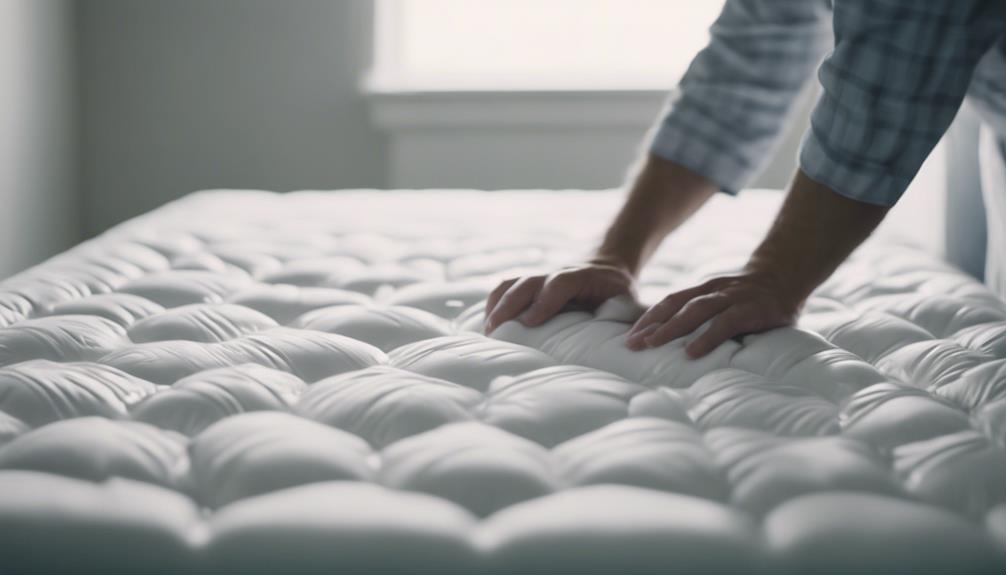
Regularly washing your mattress pad every couple of months is important for maintaining freshness and cleanliness. Following care label instructions is vital for proper maintenance. Wash the mattress pad in warm water and opt for low heat drying to prevent damage. Additionally, consider more frequent washings if you have allergies or pets that shed.
To tackle spills, stains, or stretching, address them promptly by washing the mattress pad as needed. Incorporating bonus cleaning tips such as vacuuming, using baking soda to eliminate odors, and spot-treating stains during washing can help keep your mattress pad in top condition.
Washing for Hygiene
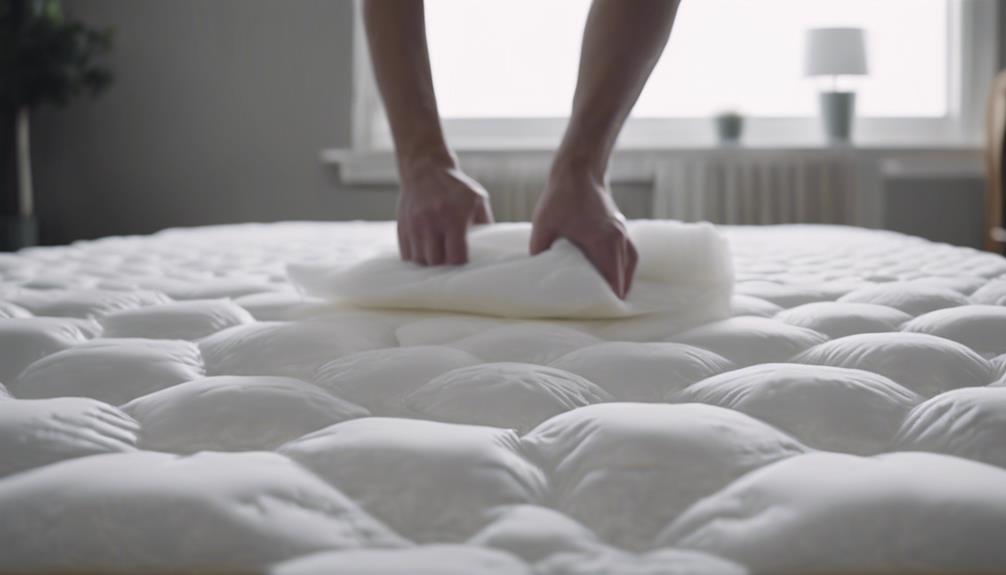
Maintaining hygiene on your mattress pad through regular washing is essential for preventing the buildup of body oils, sweat, and dust. Here are some key points to keep in mind:
- Frequency Matters: Washing your mattress pad every couple of months helps keep it fresh and clean, ensuring a healthier sleeping environment.
- Preventing Buildup: Regular washing is important to prevent the accumulation of body oils, sweat, and dust that can harbor bacteria and allergens.
- Special Circumstances: If you have allergies or pets, you may need to wash your mattress pad more frequently to reduce allergen exposure and pet dander.
- Immediate Action: Prompt washing is necessary for spills, stains, or accidents to prevent them from setting and causing lasting damage to your mattress pad.
Frequently Asked Questions
How Often Should Mattress Pads Be Washed?
We wash mattress pads every 1-2 months for most sleepers to keep them fresh and clean. If you sweat a lot, aim for washing every 2-4 weeks to prevent odors and bacteria. Allergy sufferers should wash their mattress pads more frequently to remove allergens and maintain a healthy sleep environment.
Washing a mattress pad before first use helps remove any chemicals or residues. Regular washing prevents dust mites, stains, and odors for a cozy sleep experience.
Is It Okay to Wash a Mattress Pad in the Washer?
Yes, it's absolutely okay to wash a mattress pad in the washer. Most mattress pads are machine washable, making it a breeze to keep them clean. Just follow the care label instructions for specific guidelines.
Using mild detergent and warm water can effectively remove dirt and maintain freshness. Regular washing prevents odors, dust mites, and stains, ensuring a hygienic and comfortable sleep environment.
Don't hesitate to give your mattress pad a good wash when needed!
When Should I Wash My Mattress Topper?
We should wash our mattress topper every 1-2 months to maintain cleanliness and hygiene. For heavy sweaters, it's recommended to wash it every 2-4 weeks. Those with allergies might need to wash it even more frequently to prevent allergen buildup.
Washing the mattress topper before first use can help remove any unwanted chemicals or residues. Regular washing also helps prevent issues like odor, dust mites, and stains.
Can I Put a Mattress Pad in the Dryer?
Yes, you can put a mattress pad in the dryer! It's important to use a low heat setting to avoid damaging the pad. Always refer to the care label for specific instructions.
Drying the pad helps fluff it up and remove moisture. Make sure the pad is fully dry before putting it back on the bed.
Conclusion
To wrap up, knowing when to wash your mattress pad is essential for maintaining a clean and healthy sleep environment. Just like changing the sheets regularly, washing your mattress pad can help prevent allergies, remove stains, and extend the life of your mattress.
By following care label instructions, addressing spills promptly, and practicing proper maintenance, you can guarantee your bed stays fresh and comfortable. Remember, a clean mattress pad is like a breeze of fresh air for your sleep sanctuary.
